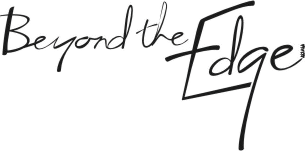How to do more of what works
Funny how things come together sometimes – an online course about decision-making in complexity and uncertainty, a book about being an astronaut, a workshop on social labs, and an exhibition on making animated movies. I didn’t plan it this way, it just happened, and now I have something to write about.
I’m reading Chris Hadfield’s book An Astronaut’s Guide to Life on Earth. If you don’t know who Chris Hadfield is he’s a Canadian astronaut who played a modified guitar and sang Rocket Man while orbiting the Earth on the MIR space station.
The gist of his book is to ‘be ready’. He maintains that sometimes, the things we want don’t always happen, but if they do, it’s good to be ready. It enables us to take advantage of good planning, serendipity, the unexpected and luck.
Putting humans into space requires good planning. In fact it requires more than that, it requires meticulous, detailed planning and implementation. Any stuff-ups could result in disaster and loss of life.
Another book I’m reading is The Social Labs Revolution: A New Approach to Solving Our Most Complex Challenges by Zaid Hassan. I went to a workshop hosted by Zaid and he said this: “There are some common characteristics of complex systems: they are emergent and inherently unpredictable; there’s lots and lots of information, making it hard, if not impossible to keep up with all of the information available; and adaptation is needed, we change our behaviour based on emergence and information.” Much of my work is in this realm – I’ve yet to work with astronauts, and I’m ready if they ever come calling! The environment, natural resources, poverty, human rights – these are all complex, and demand the best we can give. Our response to the uncertainty we face is to plan. But we can’t plan fast enough – the situation has changed even before the ink has dried, new information is coming at us faster than we could hope to absorb it.
Should we throw away the plan? Probably not. Though I do quite like that idea. We might want to take a leaf out of the animator’s book instead. What a fabulous, inspiring exhibition at ACMI in Melbourne: Dreamworks Animation. They come up with ideas for a character and then make them, first as a drawing, then in clay, then in wood. Each iteration reveals something new about what works and what doesn’t. Then there’s storyboarding – telling the story with pictures, each board a minute detail, some survive, many don’t, most change. Again they are physical. There was 100,000 A5 storyboards for the original Kung Fu Panda movie (2008).
If you’re doing something complicated, like building a bridge or sending humans into space, plan carefully. Please.
In this complex, changing, uncertain world the biggest killer to innovation, change, creativity, and maybe even success is the attitude of business as usual and “we’ve always done it this way.” While you’ve been doing things the way you’ve always done them, the world has changed. Try this instead – inspired by astronauts, animators and the Social Labs revolution!
If you’re doing something complex, like community engagement or saving the planet, be ready. Be ready for what might emerge, for the unexpected. Be ready, and flexible enough, to take advantage of serendipity, coincidence and opportunities. Learn stuff. Even if you think you’ll never get a chance to use it. Prototype. Talk about ideas, with anyone who will listen, write them down, AND try them out, see if they survive contact with the real world. If the idea sucks you’ll find out sooner rather than later, before you have invested too much, then you can try another idea. Do more of what works. Stop doing what doesn’t work to make room for more experimentation to find more of what works.
